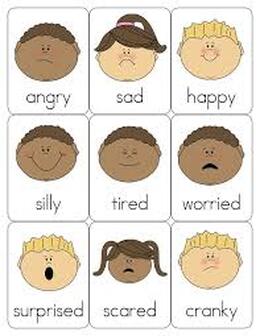|
Ms. Sunny would like to take you on a hike! As she explores the area around Bass River, what do you notice? If you would like to reply in the comments box below, we would love to hear from you!
What does Ms. Sunny see on her walk? What do you hear while she is walking? Who does she find living and crawling in the mud? What types of birds does she see? Is there anything else you noticed on her walk? Lesson/Activity Name: Feelings Self Portrait Overall Purpose: To pay attention to our feelings and understand how we can change our moods. Theme: Emotions! Learning Standard(s): SEL1 The child will be able to recognize, identify, and express his or her emotions. SEL2 Child will demonstrate accurate self perception. SEL4 Child will demonstrate impulse control and stress management. Behavioral Objectives/Learning Outcomes: I would love for the children to become more aware of their feelings and how to express them appropriately. Talk about similarities and differences in emotions before and after activity. This is a great opportunity to work on pincer grasp and learning colors. Motivational Techniques: (What will you use to pair with lesson (i.e. a book, song, video etc) https://youtu.be/xIfLgHBwYx4 - A Book of Feelings https://youtu.be/utZr0dPu5sk - A song about feelings *Feelings Chart pictured below* Procedures: (Step by Step how to do the activity) *This is a great activity to do when child is upset or in a funk* 1- Have the child pick 3 colors to draw a self portrait of how he or she is feeling. Help your child evaluate their emotions by showing this chart and asking about their feelings. Write 3 words the child uses to express their feelings. 2- After children draw ‘before’ portrait, go for a calming walk outside. Encourage the child to breathe in the fresh air and appreciate nature. 3- When back inside, the child should pick 3 new colors (or the same 3 if they choose) and draw an ‘after’ self portrait, of how he or she is feeling. Again, write 3 words the child uses to express emotions. Materials: Paper, and at least 6 different colors of markers, colored pencils or crayons. Wrap-up: Have a conversation with the child about how they were feeling before, during and after the walk outside, and how it may have changed how they felt. What colors did the child use before the walk, and why? What colors did the child use after the walk, and why? Remind the child, it is okay to feel their feelings, and that they should always talk about them. What is my child learning? (Assessment): Self-awareness and the ability to understand and label emotions are forerunners of, and foundational to, interactions and relationships with others, and therefore critical to school success and to a satisfying and successful life. In order to support children’s healthy identification and expression of emotions, educators need to be aware of their own personal attitudes and beliefs about the expression of emotions, as well as differences in expression of feelings based on culture, gender, and individuals. Modifications: If you are unable to get outside due to weather, you could try a different calming activity indoors. Try a change of scenery, maybe go into a different room and do some calming yoga, stretching and deep breathing. Helpful Hints: The child may use this time outside to run around and be crazy, attempt to redirect and calm their bodies. Also know that maybe they do need to let out that energy. |
AuthorMs. Sunny ArchivesCategories |

 RSS Feed
RSS Feed
